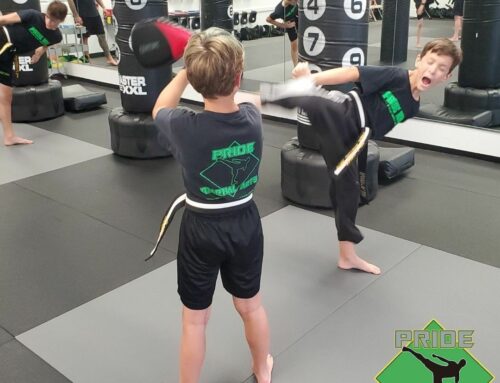As parents, we are always looking for ways to support our children’s growth and development. From encouraging healthy eating habits to finding engaging activities that foster lifelong skills, our goal is to help our kids thrive. One incredibly effective and empowering way to do this is by introducing them to martial arts. We specialize in teaching a variety of disciplines, such as Mixed Martial Arts (MMA), Tae Kwon Do, and Jiu Jitsu, to both children and adults and are passionate about guiding young martial artists on their journey.
Far from merely being a form of physical activity, martial arts training offers an array of mental, emotional, and social benefits for children, often leading to improved self-esteem, better academic performance, and a strong sense of discipline. By participating in martial arts classes, children can develop valuable skills and qualities that will serve them well throughout their lives.
In this blog post, we will dive into the many benefits of martial arts training for children, offer helpful tips for parents looking to get their kids started and provide guidance on choosing the right discipline for your child. Whether you are considering enrolling your child for the first time or are simply curious about the world of martial arts for kids, our guide will help you better understand what this powerful practice has to offer and how you can best support your child’s martial arts journey.
The Benefits of Martial Arts Training for Kids
- Physical Fitness and Coordination: Martial arts classes help children develop strength, flexibility, balance, and overall fitness, providing a fun and engaging way for kids to stay active.
- Self-Esteem and Confidence: By mastering new techniques and achieving personal goals, children can cultivate a sense of self-worth and confidence in their abilities.
- Discipline and Focus: Martial arts training emphasizes the importance of discipline and mental focus, skills that can translate to success in school and other areas of life.
- Social Skills and Camaraderie: Martial arts classes provide a supportive environment for kids to form friendships, learn teamwork, and develop respect for both peers and authority figures.
Tips for Getting Your Child Started in Martial Arts
- Trial Classes: Take advantage of trial classes or introductory programs to ensure your child enjoys the activity and is comfortable with the instructor and environment.
- Encourage Participation: Show interest in your child’s martial arts journey, attend events or demonstrations, and encourage them to share their experiences and progress with you.
- Prioritize Safety: Ensure your child is aware of safety precautions, such as wearing protective gear and understanding the importance of following their instructor’s guidance.
- Be Patient and Supportive: Remember that progress in martial arts training takes time and dedication, so be patient and supportive as your child navigates their journey.
Choosing the Right Martial Arts Discipline for Your Child
- Mixed Martial Arts (MMA): A combination of various martial arts styles, MMA often appeals to children who enjoy learning a variety of skills and techniques. This discipline may be a good fit for kids who excel in adaptability and enjoy the challenge of mastering multiple styles.
- Tae Kwon Do: An excellent option for children interested in high-energy and dynamic movement, Tae Kwon Do focuses on powerful kicks and jumping techniques. This discipline may suit kids who are keen on developing strength, agility, and flexibility.
- Jiu-Jitsu: Emphasizing ground-based grappling and submission techniques, Jiu-Jitsu can be especially beneficial for children who prefer close-range combat and wish to develop problem-solving skills during controlled sparring.
Refinding the Right Martial Arts School and Instructor
- Consider Your Priorities: Identify factors that are important to you and your child, such as location, class size, and instructor experience.
- Research the School’s Philosophy: Look for a martial arts school that aligns with your values and prioritizes the development of character, discipline, and respect.
- Evaluate the Instructor’s Teaching Style: Observe the instructor’s interaction with students to ensure their teaching style is supportive, respectful, and engaging.
- Talk to Other Parents: Speak with other parents at the school to gain an understanding of their experiences and the school’s reputation.
Conclusion
Introducing your child to martial arts can be a transformative and rewarding experience for both of you as you watch them grow, develop essential life skills, and gain a strong sense of self-confidence. By understanding the numerous benefits of martial arts training, following our tips for getting started, and selecting the right discipline, you can help set your child up for success in their martial arts journey. At Pride Martial Arts Academy, we are committed to providing a supportive and empowering environment for young martial artists of all ages and abilities, and we look forward to being a part of your child’s incredible development.





